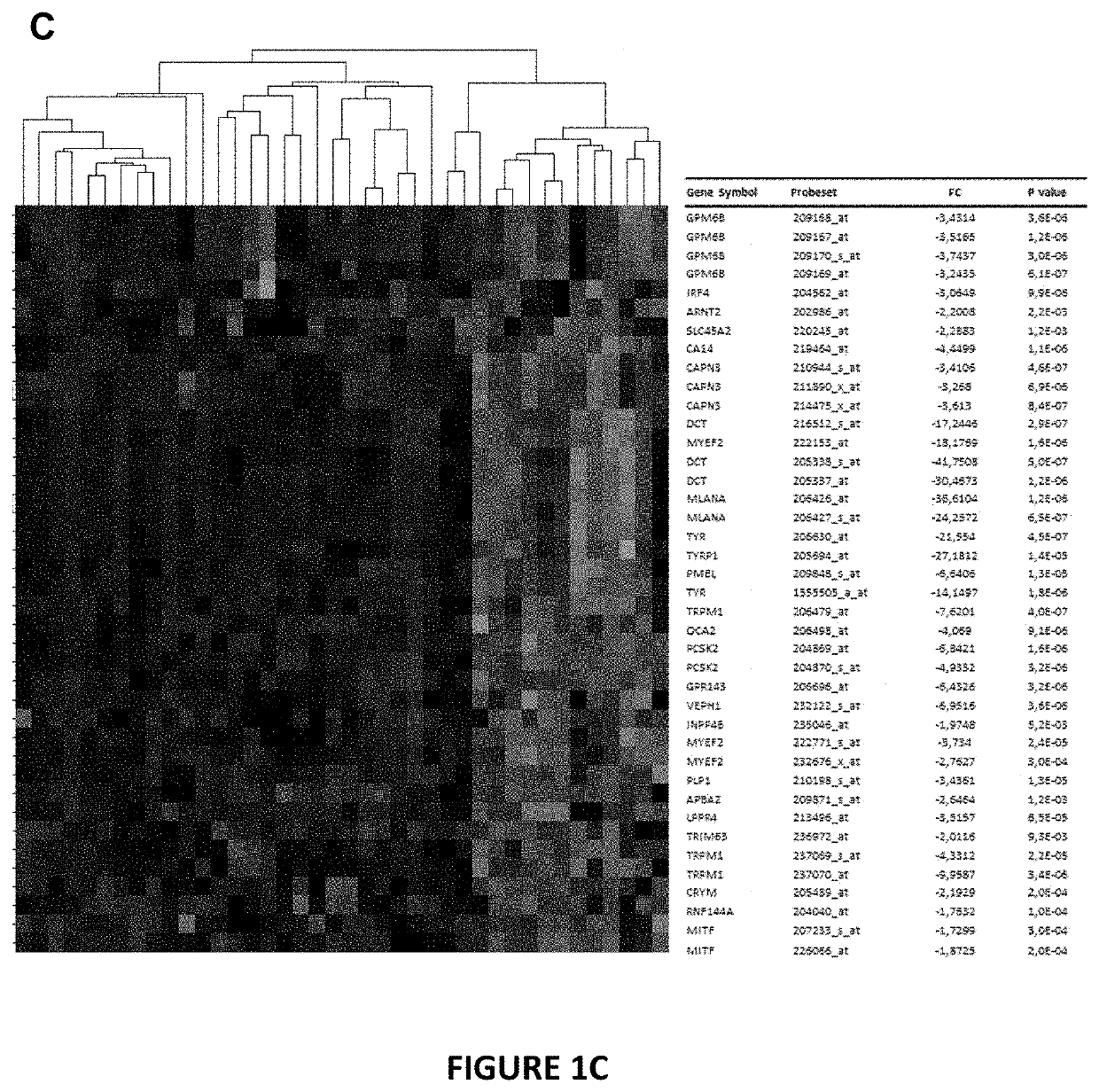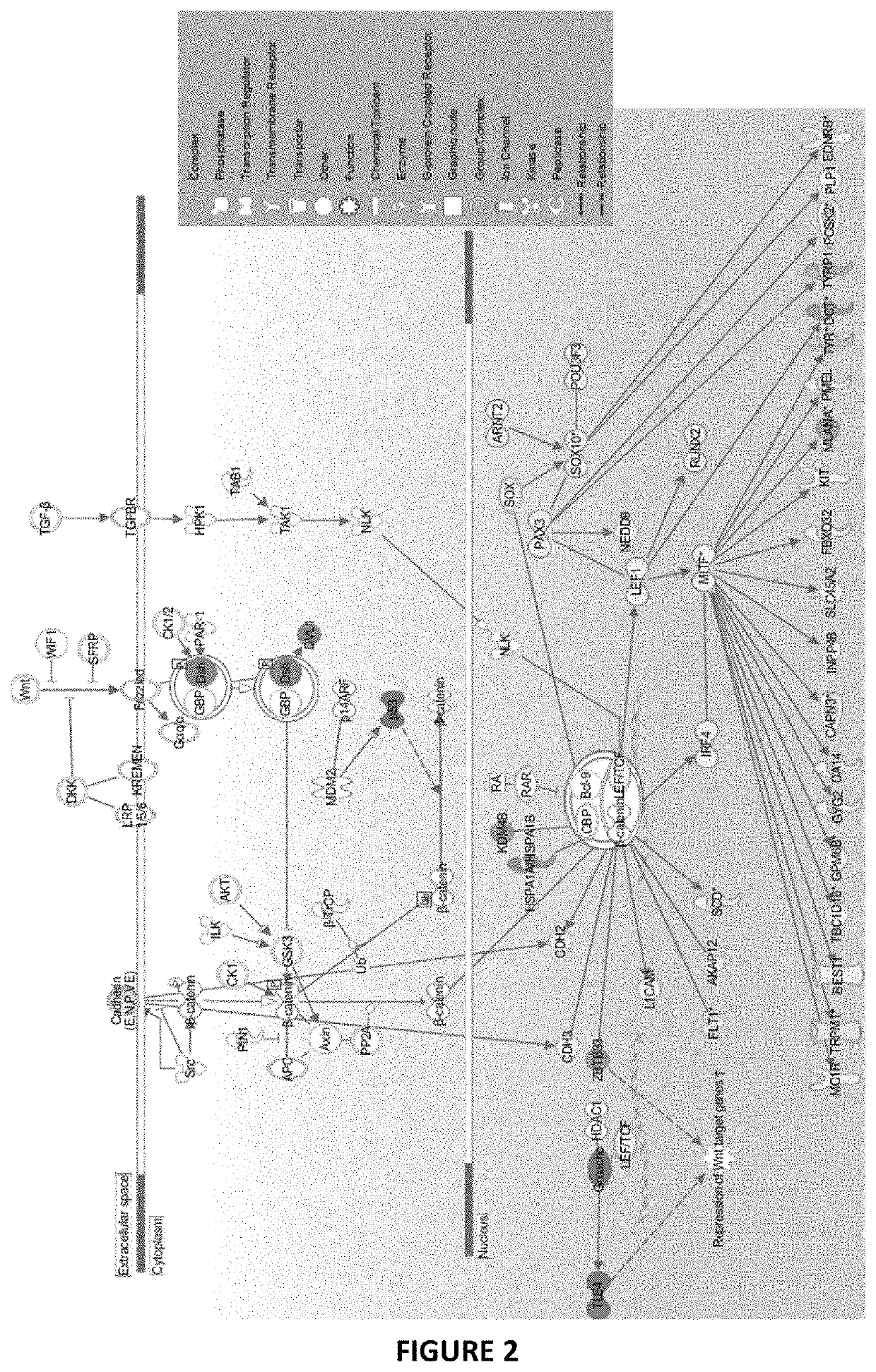Proteins of the WNT signaling pathway and uses thereof in the diagnostic and treatment of hypopigmentation disorders
a protein and signaling pathway technology, applied in the field of proteins of the wnt signaling pathway, can solve the problems of not being able to achieve most cases, and not being able to fully repigment with the current approach, etc., to achieve robustness, high relevancy, sensitivity and selectivity
- Summary
- Abstract
- Description
- Claims
- Application Information
AI Technical Summary
Benefits of technology
Problems solved by technology
Method used
Image
Examples
Embodiment Construction
[0028]A challenge in the treatment of pigmentation disorders is the lack of efficient molecules allowing efficient differentiation and proliferation of new melanocytes in depigmented area of the skin (including hands and feet), typically in vitiligo lesions, of a subject.
[0029]Another challenge is the lack of early, pre-symptomatic detection as visible symptoms of the disorders generally present at advanced stages.
[0030]The Wnt signaling pathways are a group of signal transduction pathways made of proteins that pass signals from outside of a cell through cell surface receptors to the inside of the cell. Three Wnt signaling pathways have been characterized: the canonical Wnt pathway, the noncanonical planar cell polarity pathway, and the noncanonical Wnt / calcium pathway. All three Wnt signaling pathways are activated by the binding of a Wnt-protein ligand to a Frizzled family receptor, which passes the biological signal to the protein Dishevelled inside the cell. The canonical Wnt pa...
PUM
| Property | Measurement | Unit |
|---|---|---|
| diameter | aaaaa | aaaaa |
| concentration | aaaaa | aaaaa |
| concentration | aaaaa | aaaaa |
Abstract
Description
Claims
Application Information
 Login to View More
Login to View More - R&D
- Intellectual Property
- Life Sciences
- Materials
- Tech Scout
- Unparalleled Data Quality
- Higher Quality Content
- 60% Fewer Hallucinations
Browse by: Latest US Patents, China's latest patents, Technical Efficacy Thesaurus, Application Domain, Technology Topic, Popular Technical Reports.
© 2025 PatSnap. All rights reserved.Legal|Privacy policy|Modern Slavery Act Transparency Statement|Sitemap|About US| Contact US: help@patsnap.com



